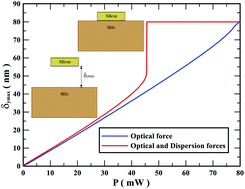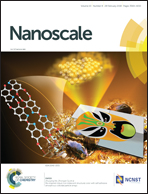Rigorous analysis of Casimir and van der Waals forces on a silicon nano-optomechanical device actuated by optical forces
Abstract
Nano-optomechanical devices have enabled a lot of interesting scientific and technological applications. However, due to their nanoscale dimensions, they are vulnerable to the action of Casimir and van der Waals (dispersion) forces. This work presents a rigorous analysis of the dispersion forces on a nano-optomechanical device based on a silicon waveguide and a silicon dioxide substrate, surrounded by air and driven by optical forces. The dispersion forces are calculated using a modified Lifshitz theory with experimental optical data and validated by means of a rigorous 3D FDTD simulation. The mechanical nonlinearity of the nanowaveguide is taken into account and validated using a 3D FEM simulation. The results show that it is possible to attain a no pull-in critical point due to only the optical forces; however, the dispersion forces usually impose a pull-in critical point to the device and establish a minimal initial gap between the waveguide and the substrate. Furthermore, it is shown that the geometric nonlinearity effect may be exploited in order to avoid or minimize the pull-in and, therefore, the device collapse.

- This article is part of the themed collection: Materials and Nano Research in Brazil


 Please wait while we load your content...
Please wait while we load your content...